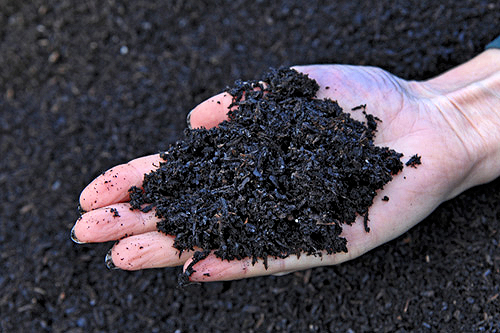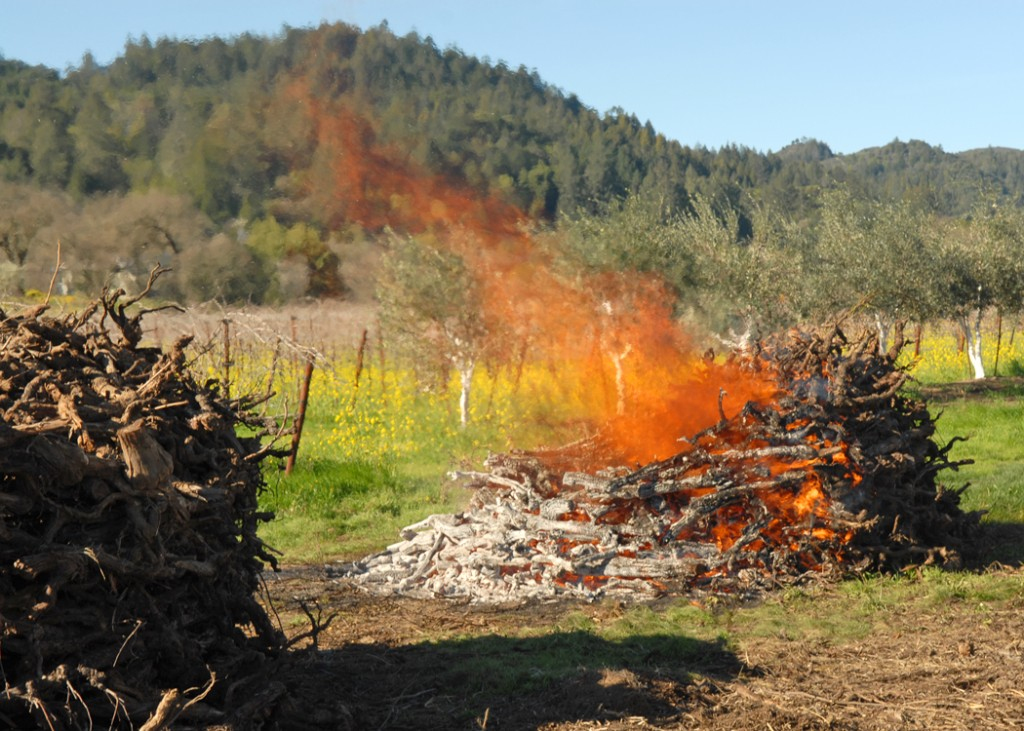 The Biochar revolution is upon us. Everywhere we look it seems like it is being touted as the next great thing to improve our soil health and save our planet. But what is biochar and how is it created? (Photos courtesy of Sonoma Biochar.)
The Biochar revolution is upon us. Everywhere we look it seems like it is being touted as the next great thing to improve our soil health and save our planet. But what is biochar and how is it created? (Photos courtesy of Sonoma Biochar.)
According to the Sonoma Biochar Initiative (SBI), Biochar is a specialized form of charcoal that is produced from woody wastes using high heat (typically 300 C to 700 C) in low-oxygen environments. Imagine charcoal briquets and you get the idea. But instead of powering your home barbecue, biochar is a much more valuable resource and has been found to have a number of important benefits all along its lifecycle.
 The first important benefit is to sequester carbon. According to SBI, biochar production and use prevents up to 50% of the CO2 contained in the feedstock from returning to the atmosphere. This is significant and could be a very important benefit as we look for ways not only to reduce greenhouse gas emissions but to actually draw down carbon and slow the warming of our planet.
The first important benefit is to sequester carbon. According to SBI, biochar production and use prevents up to 50% of the CO2 contained in the feedstock from returning to the atmosphere. This is significant and could be a very important benefit as we look for ways not only to reduce greenhouse gas emissions but to actually draw down carbon and slow the warming of our planet.
A second important benefit: biochar can greatly enhance soil health. Its unique physical structure has thousands of tiny pores that hold the nutrients and water for the plants' roots to access and enjoy, according to SBI. In many ways biochar in the soil is akin to a coral reef in the ocean, acting as a natural attractant, sanctuary, and incubator by creating infrastructure for billions of organisms to thrive. These organisms lead directly to healthier soils and plant life.
 According to Columbia Climate School, fertile soils produce more food, promote biodiversity, hold moisture better, and are less susceptible to erosion, floods, nutrient loss, and desertification. More microbes in the soil enable plants to grow deeper root systems that allow them to tolerate drought better, and be more resistant to pests. And, enhanced carbon in soils improves soil and water quality, both important to make us more resilient to climate change.
According to Columbia Climate School, fertile soils produce more food, promote biodiversity, hold moisture better, and are less susceptible to erosion, floods, nutrient loss, and desertification. More microbes in the soil enable plants to grow deeper root systems that allow them to tolerate drought better, and be more resistant to pests. And, enhanced carbon in soils improves soil and water quality, both important to make us more resilient to climate change.
Consider the Napa wine industry and the frequent vine pullings that are often burned in the vineyards. These same vineyard clippings can instead be managed using an alternative "conservation burn" method, allowing remaining carbon to be sequestered, and the resulting biochar used as an amendment improving soil health in the vineyards.
To learn more about biochar, conservation burns, and the many ways it can be made, check out Sonoma Biochar Initiative's website and this webinar they recently hosted in collaboration with the Napa RCD.